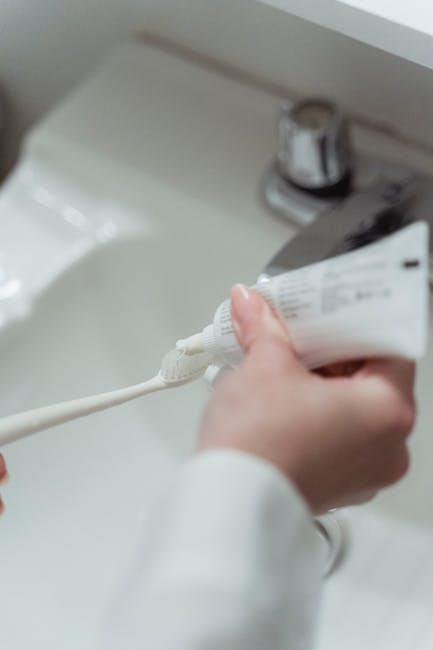
Dentists Warn of Removing Fluoride in NY Water. But Many Upstate Counties Already Don’t Have It
Fluoride has been recognized as one of the most effective public health measures to prevent tooth decay for decades. However, recent warnings by dental professionals highlight growing concerns over the proposed removal of fluoride from New York State’s water supply. Intriguingly, many upstate counties in New York have never had fluoride added to their water, prompting questions about the implications of this removal statewide.
What is Fluoride and Why is It Added to Water?
Fluoride is a naturally occurring mineral found in water, soil, and various foods. Water fluoridation—the controlled addition of fluoride to water—has been embraced worldwide since the 1940s to improve dental health, particularly for children. It strengthens tooth enamel, making teeth more resistant to decay caused by acid and bacteria.
Key Benefits of Fluoride in Drinking Water
- Reduces cavities in children and adults by up to 25%
- Cost-effective public health strategy with an estimated $38 savings on dental costs for every $1 spent on fluoridation
- Strengthens tooth enamel against acids produced by bacteria in the mouth
- Accessible to all populations, including those without regular dental care
Dentists’ Warning: Potential Waterfront of Removing Fluoride in NY
Recent discussions surrounding proposals to eliminate fluoride from New York’s water supply have raised alarms from dental professionals. The Press & Sun-Bulletin reports a coalition of dentists urging lawmakers and public health officials to retain water fluoridation due to the proven health benefits. This caution comes amid fears that removing fluoride could lead to higher rates of tooth decay, especially in communities already vulnerable to poor oral health.
Upstate New York Counties Without Fluoride in Their Water
Interestingly, many counties across upstate New York have never added fluoride to their public water systems. This creates a natural experiment to compare dental health outcomes between fluoridated and non-fluoridated communities. Below is a snapshot of select upstate counties and their fluoride status, along with potential reasons for absence:
| County | Fluoride Status in Water | Population (Approx.) | Reason for No Fluoride |
|---|---|---|---|
| Delaware | No Fluoride | 45,000 | Small water systems, rural infrastructure |
| Tioga | No Fluoride | 49,000 | Public opposition and funding issues |
| Cattaraugus | No Fluoride | 76,000 | Low urban density and resource constraints |
| Monroe (Rochester) | Yes – Fluoridated | 750,000 | Urban system with established programs |
| Albany | Yes – Fluoridated | 300,000 | Large city with fluoridation policy |
The Dental Health Difference: Case Studies From NY Communities
Studies and reports from dentists in New York reveal higher incidences of dental cavities among children in upstate counties without fluoridated water compared to those in cities such as Rochester or Albany. This trend underlines the essential role of fluoride as a preventive agent.
Example:
A 2022 survey by the New York State Dental Association showed that children in non-fluoridated upstate counties had a 30% higher rate of untreated cavities compared to children in fluoridated urban centers.
Practical Tips for Maintaining Dental Health Without Fluoride
If you live in an area without fluoridated water, here are practical ways to protect your and your family’s dental health:
- Use fluoride toothpaste: Choose toothpaste with fluoride to help strengthen enamel.
- Consider fluoride treatments: Talk to your dentist about topical fluoride varnishes or gels.
- Maintain regular dental visits: Early detection of issues prevents worsening cavities.
- Limit sugary and acidic foods: Reduce decay-causing bacteria buildup.
- Drink bottled water with added fluoride: Some bottled waters contain fluoride, check labels carefully.
Why Water Fluoridation Remains a Vital Public Health Strategy
Dentists emphasize that water fluoridation is especially critical for low-income communities where access to dental care might be limited. It is a passive form of dental protection that benefits people of all ages without requiring extra effort or expense.
Important Considerations:
- Safe and effective at recommended levels (0.7 mg/L)
- Endorsed by the American Dental Association, CDC, and WHO
- No credible scientific evidence linking fluoridation to adverse health effects at recommended concentrations
Conclusion
As New York debates the prospect of removing fluoride from its water supply, dental experts warn of the potential increase in tooth decay and associated health costs. Considering many upstate counties already operate without water fluoridation and experience higher cavity rates, maintaining fluoride in public water remains a crucial preventive health measure. Residents and policymakers alike should weigh the compelling dental health benefits against the risks of fluoride removal carefully. Protecting smiles across New York starts with informed decisions grounded in science and community well-being.


